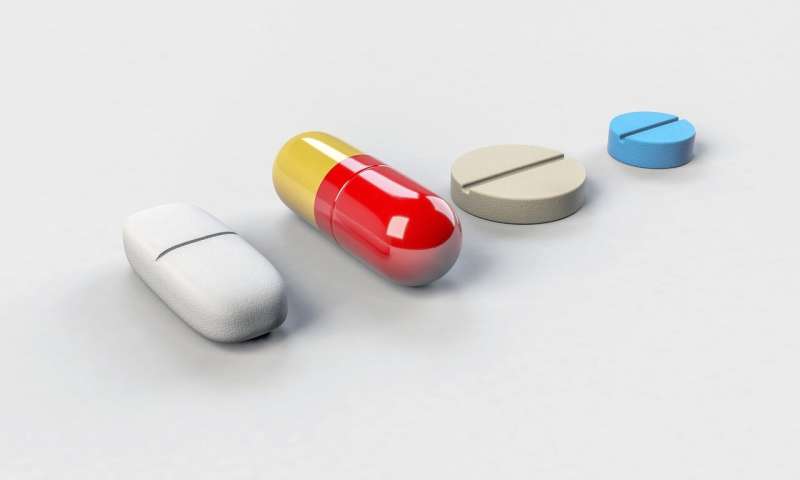Researchers harness the power of carbenes to fabricate drugs more easily and more safely

Despite being some of the most versatile building blocks in organic chemistry, compounds called carbenes can be too hot to handle. In the lab, chemists often avoid using these highly reactive molecules due to how explosive they can be.
Yet in a new study, published today in the journal Science, researchers from The Ohio State University report on a new, safer method to turn these short-lived, high-energy molecules to much more stable ones.
"Carbenes have an incredible amount of energy in them," said David Nagib, co-author of the study and a professor of chemistry and biochemistry at Ohio State. "The value of that is they can do chemistry that you just cannot do any other way."
In fact, members of the Nagib Lab specialize in harnessing reagents with such high chemical energy, and have helped invent a multitude of new substances and techniques that would otherwise be chemically unobtainable.
In this study, the researchers developed catalysts made out of cheap, Earth-abundant metals, like iron, copper and cobalt, and combined them to facilitate their new method of harnessing carbene.
They were able to successfully use this new strategy to channel the power of reactive carbenes to fabricate valuable molecules on a larger scale and much more quickly than traditional methods. Nagib compared this leap to engineers figuring out how to use steel to build skyscrapers rather than brick and mortar.
For instance, one molecular feature that chemists have been hard-pressed to create is cyclopropane, a small, strained ring of twisted chemical bonds found in some medicines. More recently, cyclopropane has been used as a key ingredient in the oral antiviral pill called Paxlovid. Used to treat COVID-19, the pill reduces the severity of the disease by stopping the virus from replicating, rather than killing it outright.
Although the cyclopropane needed to fabricate the drug has been difficult to create in large quantities, Nagib said he believes his lab's new method could be applied to create the drug more quickly and at a larger scale. "Our new method will enable better access to dozens of types of cyclopropanes for incorporation into all kinds of medicines to treat disease," he said.
While the team's research does have potential applications outside the pharmaceutical realm, like agrochemicals, Nagib said he's most passionate about how their tool could speed up the discovery of new, targeted medicines. "You could technically apply our methods to anything," he said. "But in our lab, we're more interested in accessing new types of more potent drugs."
Nagib predicts that using the process his team developed, a chemical reagent that currently takes 10 or 12 steps to make (by explosive intermediates) could be done in four or five, knocking off nearly 75% of the time it takes to fabricate.
Overall, Nagib said he hopes this research will help other chemists do their work.
"There are lots of really great scientists around the world who do this kind of chemistry and using our tool they could potentially have a safer lab," Nagib said. "The flavor of science that we do, the most satisfying reward is when other people use our chemical methods to make important molecules better."
Other co-authors were Lumin Zhang, a former postdoctoral fellow, as well as Bethany M. DeMuynck, Alyson N. Paneque and Joy E. Rutherford, all graduate students in the department of chemistry and biochemistry and members of the Nagib Lab.
More information: Lumin Zhang et al, Carbene reactivity from alkyl and aryl aldehydes, Science (2022). DOI: 10.1126/science.abo6443
Journal information: Science
Provided by The Ohio State University





















